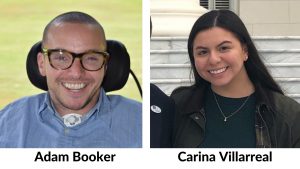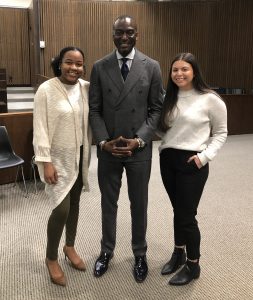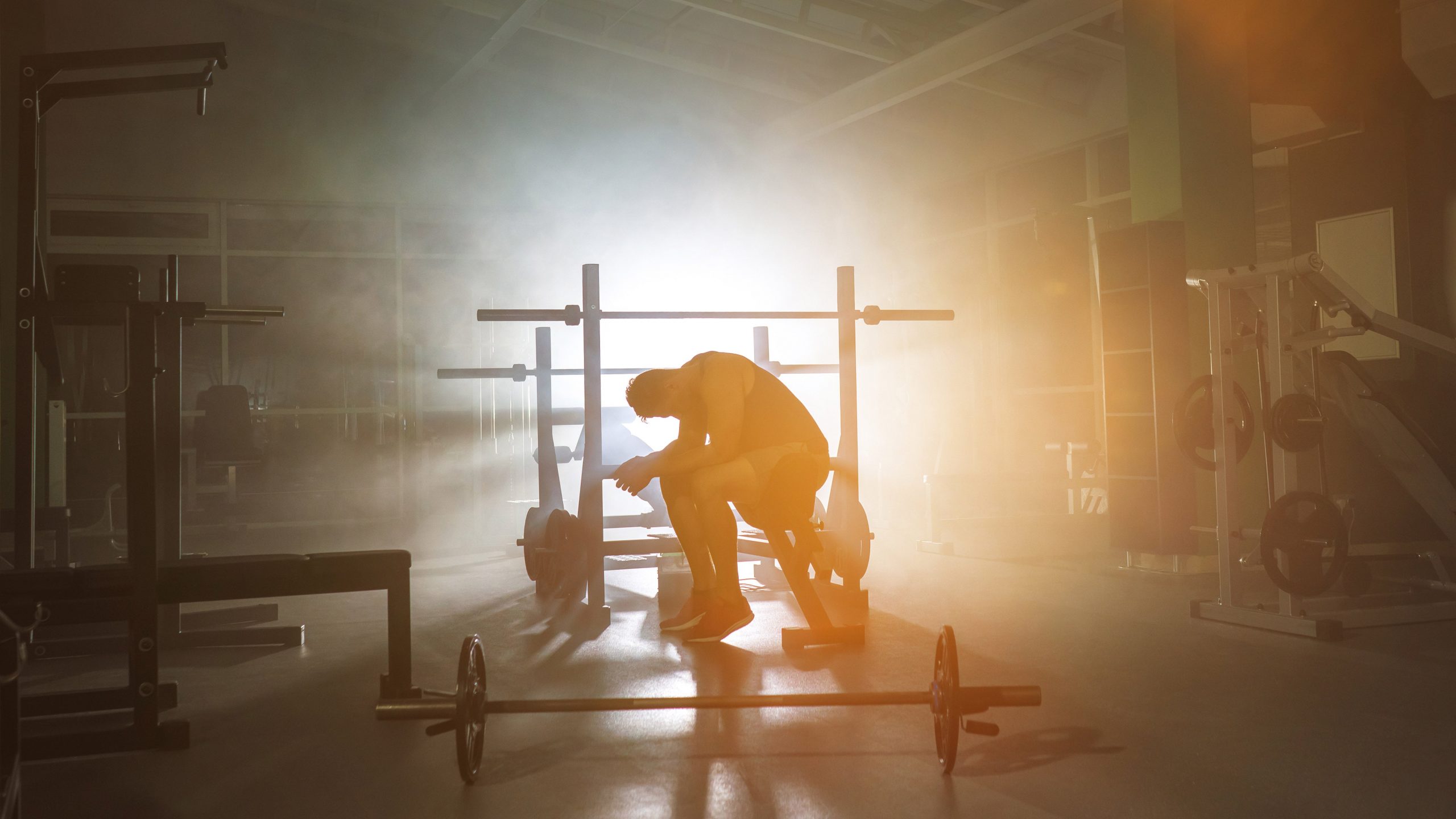Booker, Villarreal create intern ‘toolkit’ for field offices, sports teams
By David Miller
May 19, 2021
Carina Villarreal wasn’t sure what to expect.
Last summer, Villarreal, a first-year MSW student, was eagerly awaiting word of her fall field placement. She’d only taken a handful of social work classes while completing her undergraduate degree in public relations, so a field placement would be an exciting but unfamiliar experience.
And while field offices across the country had mostly adjusted to COVID-19 protocols, social work placements were still in flux; students were less likely to be placed at the agency of their choice, and there was a good chance they’d complete their placement virtually.
Villarreal would learn of her placement via email: the Alliance of Social Workers in Sports. She’d hoped to work with incarcerated youths or advocating for juvenile justice reform.
“In my field placement surveys, I really focused on those areas to help prepare myself for a placement in Washington, D.C.,” she said.
 Mild disappointment was followed by inquiry. Villarreal had never heard of sports social work, a small but burgeoning field that uses the vehicle of athletics to support competitors’ wellbeing. Villarreal had a lot of questions about the field and began Googling.
Mild disappointment was followed by inquiry. Villarreal had never heard of sports social work, a small but burgeoning field that uses the vehicle of athletics to support competitors’ wellbeing. Villarreal had a lot of questions about the field and began Googling.
Immediately, though, Tristan Gardner, her boyfriend and School of Social Work MSW graduate, would provide a glowing endorsement for Villarreal’s placement.
“As soon as I got the email about my placement, [Gardner] jumped from his seat and said, ‘you are so lucky … everyone in my cohort wanted a placement like this,’” Villarreal said. “He immediately called another person from his cohort to tell them. They were all stoked.”
Villarreal would be one of seven UA School of Social Work MSW students – all on the two-year Elephant Plan – to intern for the Alliance in fall 2020. Established in 2015, the non-profit headquartered in San Antonio “encourages the full range of social work practice in sports, from case management and clinical services through advocacy and policy practice for every level and segment of sports.”
The internship would yield several fruitful experiences for Villarreal, who built valuable connections across sports psychology and sports social work and has since shifted her career focus from juvenile justice to supporting the needs of amateur and professional athletes.
“Before I was even at UA [for undergrad], I was searching for sports telecom and film programs,” said Villarreal, who earned her public relations degree in spring 2020. “I really wanted to be in that world. It’s just funny how full circle that is.”
The perfect pairing
While most MSW students would prefer an in-person field placement, the logistics of a virtual placement were ideal for Adam Booker.

Carina Villarreal, right, and a classmate pose for a photo with Yusef Salaam of the “Central Park 5” during a campus event at the UA School of Law in January, 2020.
Booker is paralyzed from his shoulders down and lives in a long-term care facility in Flowood, Mississippi. After learning in person for his undergraduate degree at Millsaps College, he was eager to earn his MSW online, so a virtual placement at the Alliance was welcomed.
But, like Villarreal, he was unfamiliar with the field of sports social work before learning of his placement.
“I didn’t know what to expect,” Booker said. “I knew I’d learn something brand new, but how would I learn? How would I be doing it? We knew we couldn’t see actual athletes as clients, so what kind of assignments and projects would we get?”
Booker and Villarreal would eventually partner for several projects during their placements, one of which included creating a social media campaign for an organization that works to prevent human trafficking in sports, particularly in soccer.
The pair also created a sports social work field placement toolkit for social work programs across the country. The document includes learning plans for interns and a robust suite of supplemental materials.
Despite the challenges of collaborating on projects remotely, Booker and Villarreal maintained consistent communication and met all their project deadlines. Their approach to divvying up tasks helped preserve their focus and interest in each assignment. For instance, Villarreal, who has experience in creating campaigns, “was the creative genius for our group,” Booker said.
“What helped was that, whenever we received a critique or an edit to the guide, we decided what we were interested in and what we would work on,” she said. “People dread group projects, but if you’re honest with your ability and deadlines, you can get work done.
“We finished our work seamlessly.”
The Toolkit
Since the field of sports social work is still relatively young, the opportunities for placements are fewer than more established fields. Consequently, how those internships are designed and executed, whether at agencies like the Alliance or with college or professional sports clubs, can vary significantly.
Agencies and interns needed standardization. They needed a “toolkit.”
Creating a comprehensive guide to meet this need would be the benchmark project for the duo.
Booker said the sports social work toolkit includes a learning plan that follows the Council on Social Work Education code of ethics, along with video testimonials from sports social workers and curated documentaries, podcasts and webinars.
Building this toolkit was a weekly endeavor with different tasks from their placement supervisor and Alliance executive committee member, Dr. Matt Moore. Some tasks were simple, like building a spreadsheet of nationwide BSW and MSW contacts. Others forced the interns to learn, compile and revise while eyeing the clock.
“Creating the learning plan took the longest on my end,” Booker said. “Learning to do it all and perfect it, then turn it in to Matt, him sending it off and reviewing it, and then us taking notes to go back and edit it … it was a brand-new experience for me but super cool and helpful to learn.”
Part of the selection and editing process of the toolkit was to illustrate how much interns could learn virtually. Villarreal said she attended over 10 virtual conferences and webinars that covered topics “I would have never thought of” if not for her placement at the Alliance.
“The toolkit serves as a tool that, firstly, spreads the word about sports social work,” Villarreal said. “We then wanted to show field supervisors this is possible on their campuses, and even if they don’t have robust sports programs, they could seek out opportunities off campus.”
Being “selective and purposeful” in selecting supplemental materials was challenging, but streamlining the toolkit was necessary for what was essentially a “starter kit,” Villareal said.
“The most difficult part would be putting myself in the shoes of a field supervisor, someone like Kimberly Gibson, because they have so many factors to consider when placing students – students’ interests, but also, how can the student best complete work for an agency?” Villarreal said. “I wanted to find those factors without making the guide too long, because that could deter people. I wanted it to be comprehensive but not get into every nook and cranny, because some questions people may ask at a larger university may not be the same at a smaller university.”
Villarreal has been accepted into the Washington, D.C. Internship Program for the Spring 2022 semester and hasn’t yet learned where she’ll be placed.
Booker will enter his second placement this fall and hopes to intern in a counseling center.
